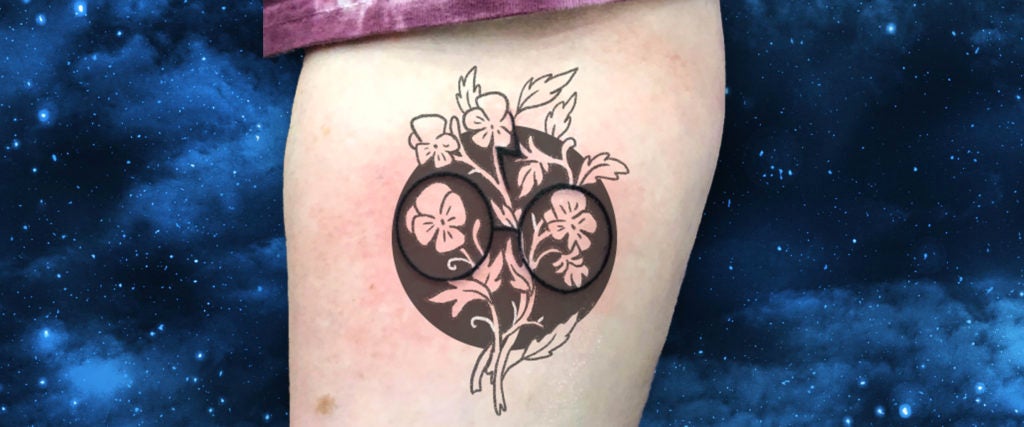Just in time for Pride month, billionaire children’s book author J.K. Rowling tweeted a thread about “biological sex,” claiming trans people are “erasing the concept of sex” and are therefore a threat to the safety of lesbians and women everywhere.
If sex isn’t real, there’s no same-sex attraction. If sex isn’t real, the lived reality of women globally is erased. I know and love trans people, but erasing the concept of sex removes the ability of many to meaningfully discuss their lives. It isn’t hate to speak the truth.
— J.K. Rowling (@jk_rowling) June 6, 2020
Rowling, who could be eating fistfuls of money on a zeppelin floating above the Aegean Sea instead of posting on social media, followed up her transphobic tweets with an even more transphobic blog, which, like her books, is too long and logically incoherent to warrant analysis here. Suffice to say, she doesn’t #StandWithTrans.
Which has made life particularly difficult for those who do — but who also previously pledged their allegiance to the Harry Potter series via tattoo.
I've spent today drawing coverups for Harry Potter tattoos in exchange for donations to https://t.co/YN9pW0qkqW – I have a bunch more to do and am not currently taking any more on, but here are some I liked from today! pic.twitter.com/m18NII8rfA
— Molly Knox Ostertag (@MollyOstertag) June 9, 2020
Judging by the replies to Ostertag’s tweet (and by my having attended more than one Comic-Con), by far the most popular HP ink is the Deathly Hallows symbol. Its simplicity — a circle inside of a triangle, both bisected by a straight line down the center — has definitely contributed to its ubiquity among a certain kind of Potter fan. It’s so simple, in fact, that Leigh, a hairstylist in Houston, tacked their Deathly Hallows tattoo onto the end of a different tattoo session. “I just threw out the idea to my artist, and he shrugged and offered to do it pretty cheap since it’d be easy and he already had everything set up anyway.”
Meanwhile, Andrew, a 26-year-old from Ohio, says he got one “on a whim” in college. “My then-boyfriend and his friend had dragged me to a tattoo parlor off campus and made me watch as they both got inked,” he tells me. “The artist had asked if I wanted anything done. I didn’t want to be left out, so I chose a very small Deathly Hallows symbol on my right wrist.”
But while his tattoo was a spur-of-the-moment choice, Andrew’s connection with the Potter books had a decade of history behind it. “Growing up, Harry Potter was considered a ‘forbidden book series’ in my household,” he explains. “My mom was super religious and hated the concept of witches and wizards. Despite this, I still had my ways of getting my Potter on. I’d have a friend check them out [from the school library], and I’d slip the dust cover from my Bible on them so I could read them at home without suspicion. While this battle of the books was going on, I also was coming to terms with the fact that I was gay. In an environment filled with judgment and damnation, Harry Potter taught me that love and acceptance was the most powerful weapon of all.”
“The [Harry Potter] books were also really important to me as a kid who grew up queer in a really small, homophobic town,” explains Cora, a 24-year-old who requested anonymity. “There was something really powerful in identifying with characters who were outcasts but who stood up for what they believed in.”
Cora’s opinion, however, has changed as they’ve grown older. “What really bothered me was how clearly werewolfism was supposed to symbolize HIV/AIDS,” they say. “The anti-Semitic goblins at Gringotts, the fact that there were very few characters of color, etc. It was stuff I didn’t pick up on as a kid, but one summer when I was home from school, I reread the series and often found myself thinking, Man, what the hell is this?”
If the books weren’t holding up, Rowling was faring much, much worse. As Andrew describes it, “Then J.K. Rowling started having ‘middle-aged moments’ on Twitter — or PR speak for ‘coming out as a giant fucking transphobe.’”
Now that she’s abandoned all plausible deniability about her views on trans people, Potter fans are split on whether it’s possible to separate the author from her work.
For a while, Leigh thought they could. “I still feel as though the story was formative for me, and that death of the author allows us to enjoy the media and build on it in a way that makes sense to our own experiences,” they explain. “It helped me continue to feel okay with my tattoo in spite of Rowling’s faults and shortcomings.”
But Rowling’s most recent posts made her beliefs impossible for Leigh to ignore. “As a nonbinary person, the symbol has almost started to feel deceitful,” they tell me.
“Every time J.K. Rowling had something to say, I’d regret the tattoo more and more,” Cora adds. “It became impossible to sever her from the series. Clearly her politics and values influenced how she wrote the whole universe.” And for Cora, Rowling’s comments are particularly painful. “Her views on biological sex are especially annoying for me because I recently accepted that I’m nonbinary, and I’m sick and tired of being told that it’s only women who menstruate,” they continue. “It’s invalidating for trans women and [assigned female at birth] folks who aren’t women, because a period isn’t something you can download or uninstall. We’re basically being told [by Rowling], ‘I know your identity better than you do because I passed high school biology.’”
That said, Cora is still not sure what to do about the tattoo. “I rushed into getting it and wound up regretting it,” they explain. “So I don’t want to rush and get it covered with something I’ll also regret a few years down the line.”
Andrew is similarly undecided. “What am I going to cover it up with? I don’t know,” he says. “It’s small enough that I can wear a watch over it for now, but I’m not sure what I’d cover it up with in the long run. Maybe an arrow? Something with trees?”
Still, his commitment to getting the tattoo covered up — once COVID social-distancing guidelines allow for it, of course — is unwavering. “I will always hold a special place in my heart for Harry Potter, but it’s time to close this book out of an abundance of respect and solidarity for my trans brothers and sisters,” he tells me. “Until then, all I have is this tattoo and a journey that began in a cupboard under a flight of stairs.”

